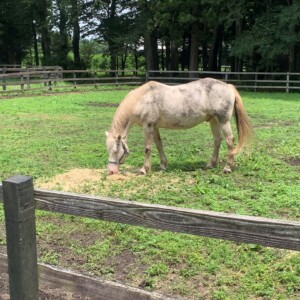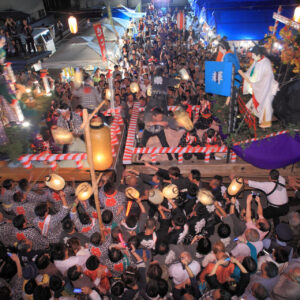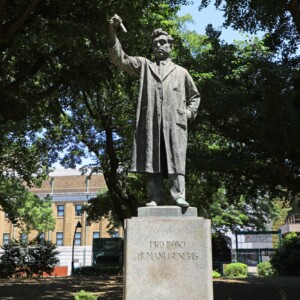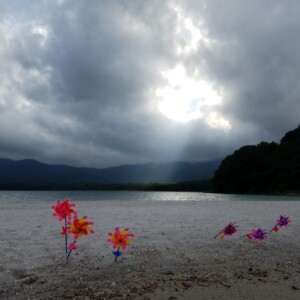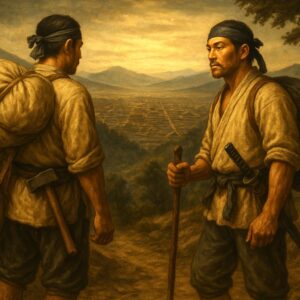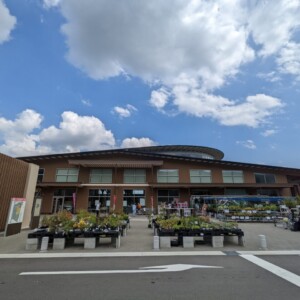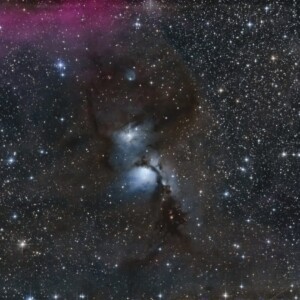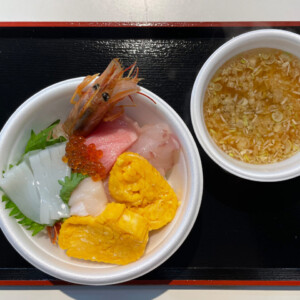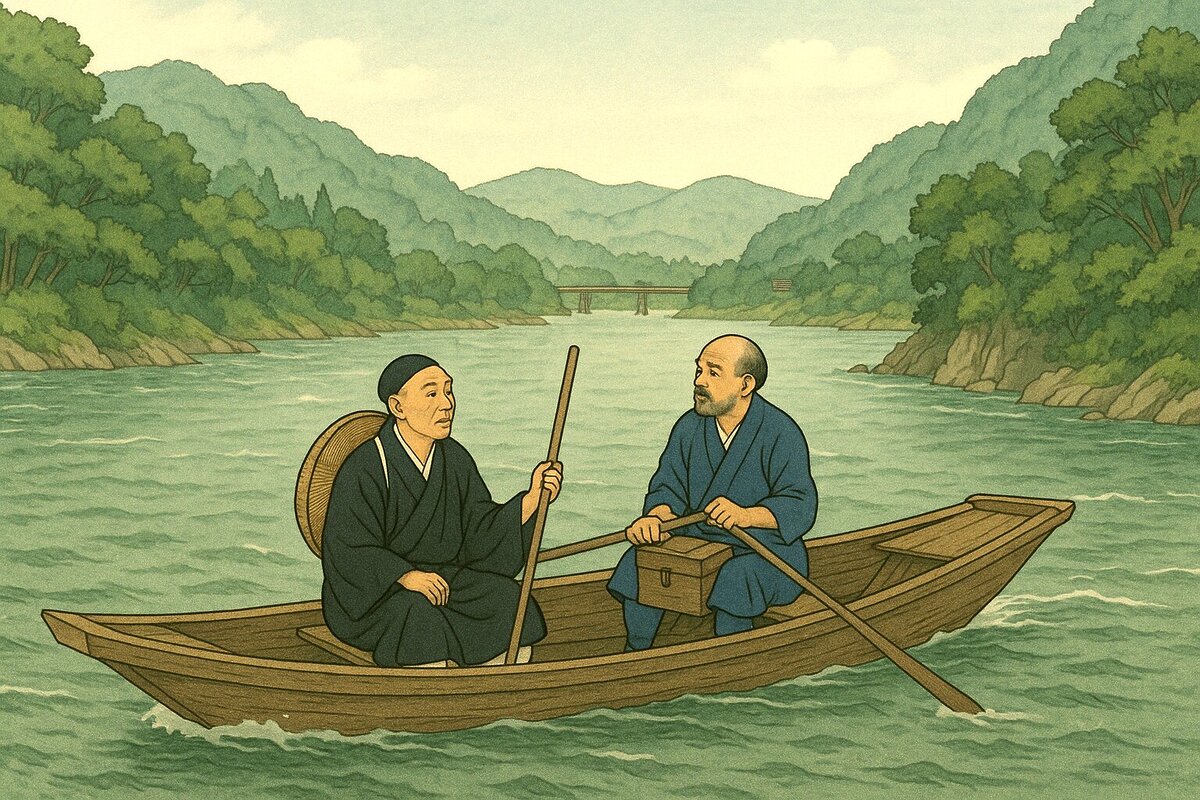
[Series: Following the narrow path to the back of the mountain ⑥] Go down the Mogami River and visit the Dewa Sanzan, one of Japan's three major Shugendo practices
table of contents
- 1 What is Oku no Hosomichi?
- 2 [Oishida/Shinjo] A warm welcome from a local haiku poet and a boat ride down the rapids of the Mogami River
- 3 [Mount Haguro] One of the main purposes of the trip: visiting the Dewa Sanzan mountains
- 4 Dewa Sanzan, one of Japan's leading power spots for reincarnation
- 4.1 The coolness of Mount Haguro in the last three months (Basho)
- 4.2 How many peaks of clouds have crumbled? Mountains of the Moon (Basho)
- 4.3 Unspoken, my sleeves wet in the bath (Basho)
- 4.4 Yudono Mountain: Tears flow on the road where I walk along the coin path (Sora)
- 4.5 Dewa Sanzan Shrine <Information>
- 5 [Detour to the Deep North ⑥] Farewell to Sora in Hokuriku
- 6 summary
- 7 [Series: Following the Oku no Hosomichi] Series article
On May 28th, 1689 (July 14th in the Gregorian calendar), Matsuo Basho and Kawai Sora returned to Obanazawa from Yamadera (Risshakuji Temple) and stayed at the home of Takano Kazuei in the neighboring town of Oishida
I stayed here for three days, and the purpose was to wait for the weather to improve, but during my rest, a haiku gathering with local haiku poets was held
Basho and his companions traveled to Shinjo and enjoyed a boat ride down the Mogami River, then visited the Dewa Sanzan mountains of Mount Haguro, Mount Gassan, and Mount Yudono
What is Oku no Hosomichi?

``Oku no Hosomichi'' is a journey in which the haiku poet Matsuo Basho and his disciple Kawai Sora travel from Edo to Mutsu, from Hokuriku to Ogaki in Gifu, visiting Utamakura and famous historical sites while composing haiku. This is a collection of travelogues.
Utamakura refers to famous historical sites whose images and emotions were woven into waka poems by poets from ancient capitals, and were the object of admiration for poets and haiku poets.
In the preface, Months and days are travelers for a hundred generations, and every year that comes and goes is also a traveler'' . It appears in textbooks and is translated as "It's like a traveler."
It introduces the climate of Michinoku and the haiku poems that were composed there, and is a record of the 156-day journey of approximately 2,400 km from its departure on March 27, 1689 (May 16, 1689).
[Oishida/Shinjo] A warm welcome from a local haiku poet and a boat ride down the rapids of the Mogami River

Haiku poetry was popular in Oishida, and local haiku poets were delighted with Basho's visit and held a haiku gathering to console him.It was during this renga that the famous haiku about the Mogami River was born
In between haiku meetings, Basho and his companions visited the nearby Mukogawa-ji Temple at the recommendation of a local person, and then headed to Shinjo City, where they stayed for two nights at Shibuya Jinbei's house
They then enjoyed a boat trip down the river from the Motoaikai boat landing where the Mogami River and Nitta River meet, disembarked at Kiyokawa in Shonai, walked to Mount Haguro, and stayed at the Nantan-in residence until the 9th
The Mogami River flows quickly, gathering the early May showers (Basho)
At first glance, this poem has a simple meaning: "The rain of the rainy season gathers on the Mogami River, creating a rapid current." However, what is noteworthy is that Basho and his companions are going down this swollen rapids in a boat
The text states that "the water level was so high that the boat nearly capsized several times,"
This poem was actually written at a haiku gathering in Oishida, and originally it was written as "The Mogami River cools as it collects the May showers," "Collected and quick .
Yamukadate and the place where Basho embarked <Information>
- Facility name: Yamuki Tate and the site where Basho embarked
- Location: Hongokai, Shinjo City, Yamagata Prefecture
- Phone number: 0233-29-5848 (Shinjo City Hall, Commerce and Tourism Division, Tourism Exchange Office)
- URL: Shinjo City Official Website (Commerce, Industry and Tourism Division))
Google Map
[Mount Haguro] One of the main purposes of the trip: visiting the Dewa Sanzan mountains
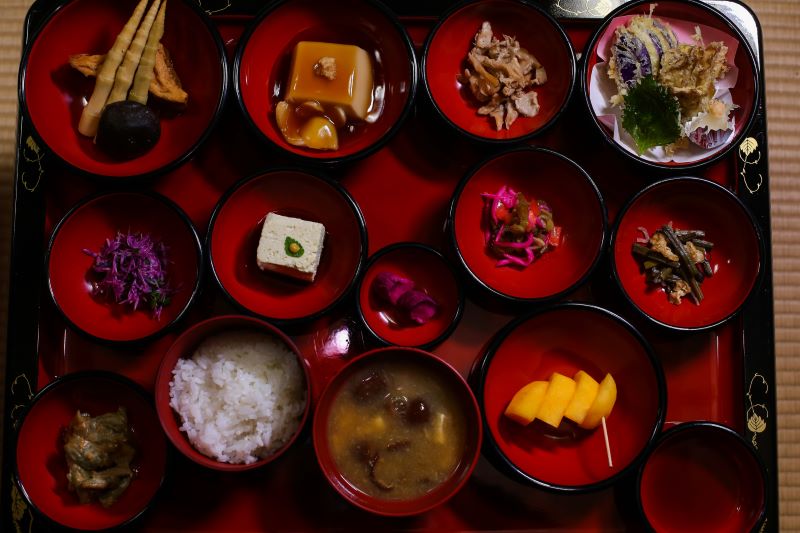
On June 3rd (July 19th), I climbed Mount Haguro and was hosted by Egaku Ajari (a high-ranking monk), who is the acting head priest (Bettō: the person in charge of the overall affairs), through an introduction by Kondo (Zushi) Sayoshi, a central figure in the Shonai-Haguro haiku world
To express my gratitude for spending six nights at the Nantan-in residence (branch temple) (with the middle day, the 6th, being spent at Gassan), I composed the following haiku at a haiku gathering held at the main temple
Thank you for the snow-covered Nankoku Valley (Basho)
It means, "The cool breeze that blows across the remaining snow on the mountain is blowing through Minamidani where I am, and it matches the sacred atmosphere of Mt. Haguro, so I am very grateful."
Basho is said to have been very fond of the branch temple in Minamidani, which had been arranged for him by the head priest of the Ekaku sect, and these seven days, during which he enjoyed a long-cherished pilgrimage to the Dewa Sanzan mountains and haiku poetry, must have been a blissful week
Dewa Sanzan, one of Japan's leading power spots for reincarnation
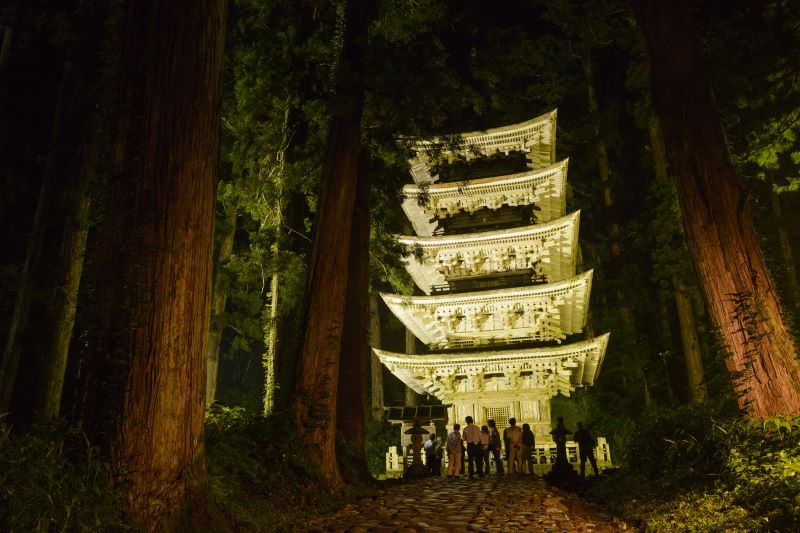
The Dewa Sanzan mountains are said to represent the present, past, and future, with Mt. Haguro representing the present, Mt. Gassan representing the past, and Mt. Yudono representing the future .
The journey around these three mountains a "journey of reincarnation," it may have had something in common with the worldview of "impermanence of all things" that Basho realized when he was in Iizaka Onsen in Fukushima, where he fell
The usual route to visit these three mountains is to start at Mt. Haguro in the present world, then gaze upon the past at Mt. Gassan, and finally be reborn at Mt. Yudono in the future
Basho and his companions visited Yudono Shrine on the 5th, then climbed Mt. Gassan on the 6th, visited Gassan Shrine, stayed at a mountain hut, and concluded their trip at Yudono Shrine on the 7th
After returning to the branch temple in Minamidani, Basho and Sora were asked by Kaikaku Ajari to write a haiku for him, and Basho wrote three haiku for each of the three mountains on a strip of paper and presented them to him
The coolness of Mount Haguro in the last three months (Basho)
It means, "A faint crescent moon hangs over the cool edge of Mt. Haguro."
Basho arrived at Mt. Haguro on the 3rd and wrote this poem describing the scene of him walking along the dark approach to Minamidani Betsuin Temple, lit only by moonlight. It is said to express that the sacred ground of Mt. Haguro is cooler than the world below and has a spiritual aura about it
How many peaks of clouds have crumbled? Mountains of the Moon (Basho)
It is said to mean that "thunderclouds like peaks in the sky built up and then collapsed one after another, and this beautiful mountain, illuminated by the moon, became Mt. Gassan."
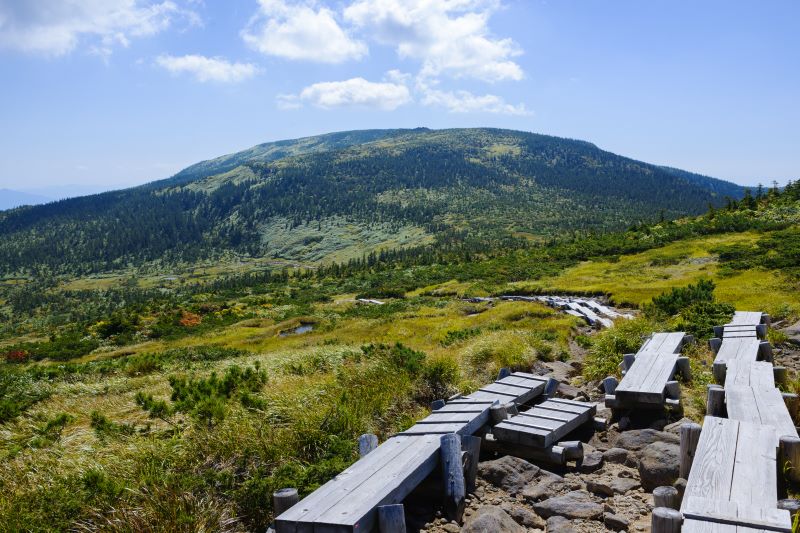
It is thought that Basho composed this poem while looking up at Mt. Gassan from the base of the mountain, rather than from the summit
Unspoken, my sleeves wet in the bath (Basho)
It is interpreted as "The nobility of Mt. Yudono, a place that should not be spoken of, brings tears to one's eyes and wets one's sleeves."
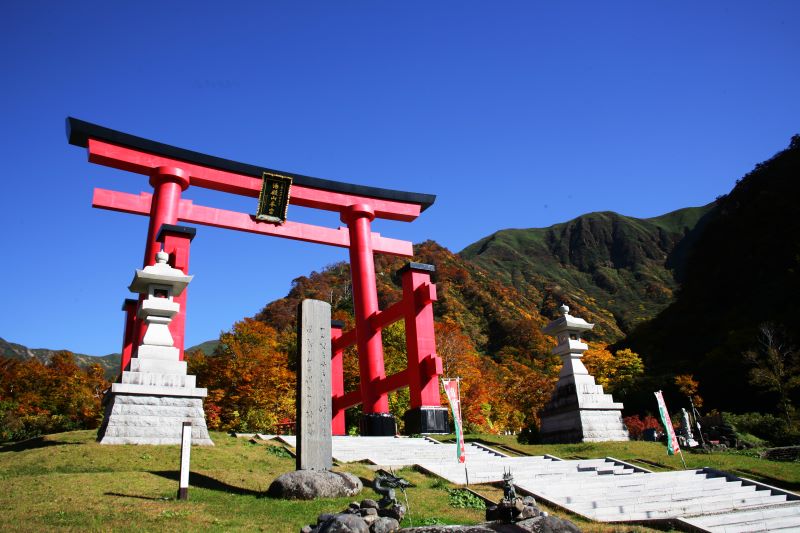
Mount Yudono is a sacred place where it is forbidden to talk about it to others, and Basho's feelings are expressed in the poem, which states that he was so moved by being able to see the place that he was brought to tears
Yudono Mountain: Tears flow on the road where I walk along the coin path (Sora)
This poem means, "On the approach to Mt. Yudono, offerings are scattered, but as I made my pilgrimage, stepping on the many coins, I was moved to tears by the gratitude I felt."
At the time, offering boxes were not permitted at Mt. Yudono, a place of mountain worship, and there was a rule that dropped offerings should not be picked up, so it is said that offerings were simply left lying on the roads
Dewa Sanzan Shrine <Information>
- Facility name: Dewa Sanzan Shrines (Hagurosan Shrine, Gassan Shrine, Yudonosan Shrine)
- Address: 33, Temu-Haguroyama, Haguro-cho, Tsuruoka City, Yamagata Prefecture
- Phone number: 0235-62-2355 (Hagurosan Shrine)
- URL: Dewa Sanzan Shrine official website
Google Map
[Detour to the Deep North ⑥] Farewell to Sora in Hokuriku
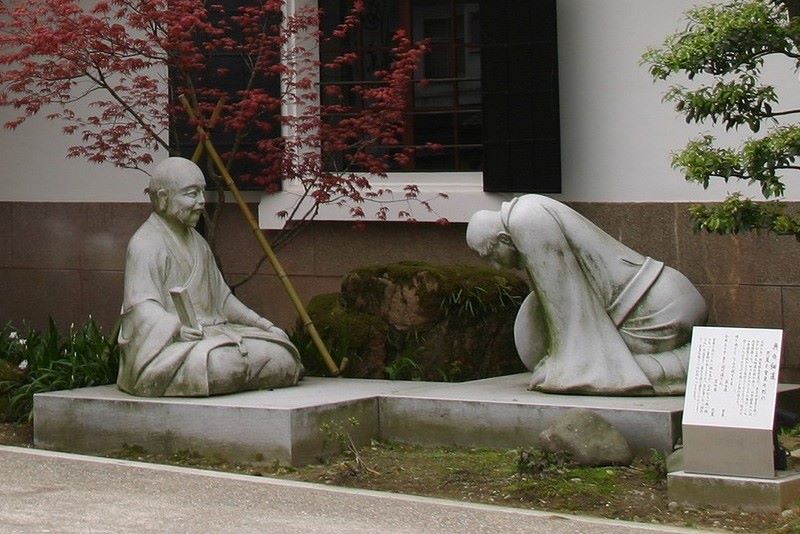
The Narrow Road to the Deep North continues from Yamagata Prefecture, through the Hokuriku region , and on to Ogaki City in Gifu Prefecture, but Sora, who had been traveling with them up until that point, developed stomach problems and became very ill along the way.
As a result, Sora decided to visit his relatives who lived in Nagashima, Ise Province (Mie Prefecture) to recuperate, and they sadly parted ways at Yamanaka Onsen in Kaga City, Ishikawa Prefecture
However, when Basho safely arrived at his destination in Ogaki, Sora appeared there looking healthy and the two were reunited
summary
The chapter on Dewa Sanzan in Oku no Hosomichi is somewhat different in style from the other chapters, and is said to be a very detailed description of these three mountains, which are known for their Shugendo practices, and the poems he left behind have also been highly praised
After cruising down the Mogami River and visiting the Dewa Sanzan mountains, Basho and Sora set off for their final destination in Mutsu, the Shonai region on the Sea of Japan side of Yamagata Prefecture, heading for Kisakata in Akita Prefecture







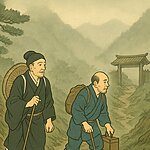


![[Serialization: Following the narrow path in the back of the mountain ⑤] Struggling with the narrow path through the mountain pass and the difficult checkpoints, we headed to Dewa Province Oku no Hosomichi 5](https://jp.neft.asia/wp-content/uploads/2023/09/28a347e9b86312617fa5dcb3d266a91b-1-150x150.jpg)
![[Yamagata Prefecture] Why not enjoy watching the history of safflower culture from Yamaji Temple's "Tateishi-ji"? 1772_Matsuji Kaizando](https://jp.neft.asia/wp-content/uploads/2022/02/7d15d2247e4e5eddbef13e4535201c34-150x150.jpg)
![[Serialization: Following the narrow road in the back part 7] The journey is finally coming to an end, from Dewa to Uzen, and then to Hokuriku Oku no Hosomichi 7](https://jp.neft.asia/wp-content/uploads/2023/10/ef46a9f4e23d51f52518cd66fade3cd6-1-150x150.jpg)
![[Series: Tracing the narrow path of the depths ④] Arriving at Hiraizumi, the Pure Land of the three generations of Fujiwara Basho, a dream of Basho Oku no Hosomichi 4](https://jp.neft.asia/wp-content/uploads/2023/09/addf9e31ea8b62f6903d5ad9db53d39e-1-150x150.jpg)
![[Serialization: Following the narrow path in the back part 2] After arriving in Miyagi Prefecture, Basho and Sora aim for Sendai, the capital of forests. Oku no Hosomichi 2](https://jp.neft.asia/wp-content/uploads/2023/09/f05201ee29d975b84ec437a8b76f2b98-150x150.jpg)
![[Serialization: Following the narrow path of the depths ③] After leaving Sendai, Basho and Sora arrive at Matsushima by boat from Shiogama. Oku no Hosomichi 3](https://jp.neft.asia/wp-content/uploads/2023/09/8d13d45bbc671b05b0b298bc51e72716-150x150.jpg)
![Matsuo Basho was impressed by the legendary landscape of Kujukushima, the elephant, which is not seen now [Nikaho City, Akita Prefecture] Image of Kujukushima (Zogata)](https://jp.neft.asia/wp-content/uploads/2024/11/e07987a7f27f41ed4fd79661bf32afbc-150x150.jpg)
![Tateishi-ji Temple, a corner of the four temple corridors, including Chuson-ji Temple, Mokoshi-ji Temple, and Zuigan-ji Temple [Yamagata Prefecture] Yamadera Risshakuji Temple](https://jp.neft.asia/wp-content/uploads/2016/09/26668581_m-150x150.jpg)
